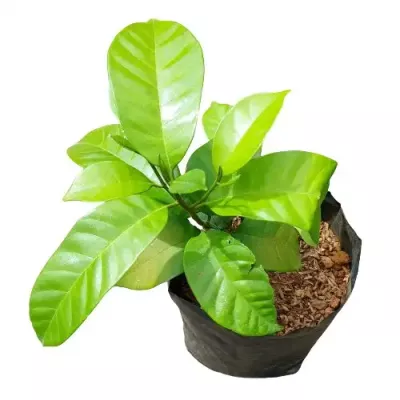



Keledang, like jackfruit, belongs to the Artocarpus genus and has a mixed taste of jackfruit and mangosteen. It is closely related to Anjili but is sweeter in taste. The grafted varieties can be maintained as a small tree. Fruiting starts in 3–4 years.

Pay using UPI, Card or Netbanking

Shipping within 3 working days
Keledang, or Artocarpus lanceifolius, is a Southeast Asian fruit. It is natively found in Thailand, the Malay Peninsula, Sumatra, Bangka, Lingga, and the Riau Islands. Keledang resembles Jackfruit in it's appearance, but much smaller.
Anjili or Wild jack found in India resemble very closely to Keledang. However, Keledang is sweeter, and the pulp has an attractive reddish color.
They are large, evergreen trees that can grow to be 35 metres tall. The main trunk diameter of a fully grown Keledang can have a diameter of up to 3 feet.
The bud varieties used for homestead planting are however much smaller and can be maintained compact.
Keledang trees are common in lowland tropical rain forests and hills up to 600 m in altitude. The edible fruit is occasionally collected from the wild for local consumption and is also sold in local markets.
In general, species in this genus prefer a deep, well-drained soil; young plants need some shade, but they need increasing light levels as they mature. The plant is found in the wild on a range of soils, from sandy to clay.
Like other members of the Artocarpus genus like the Jackfruit tree and Anjili, Keledang is well-known for its high-quality timber.
Data sheet